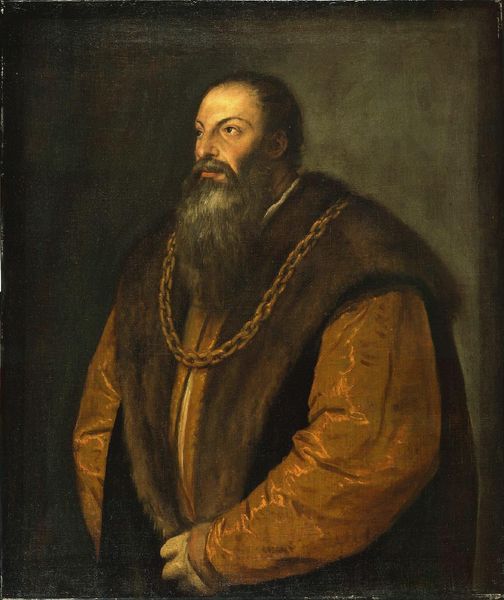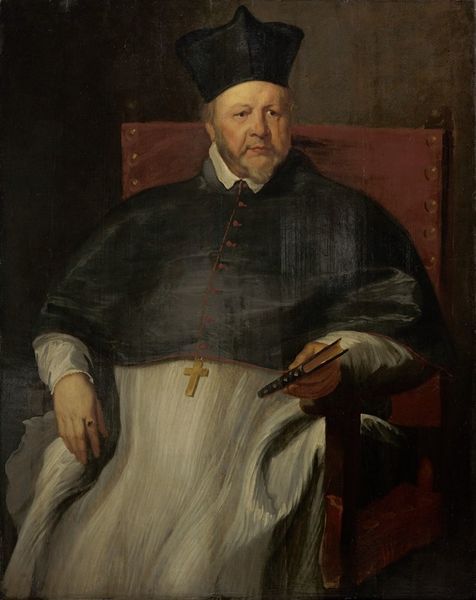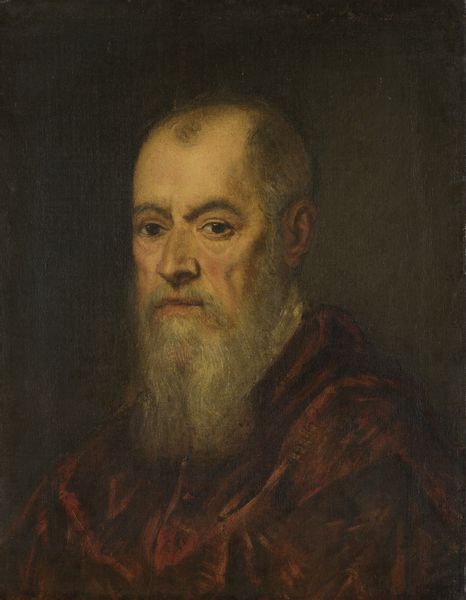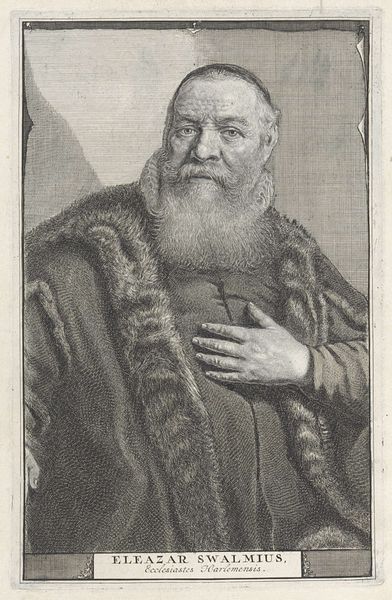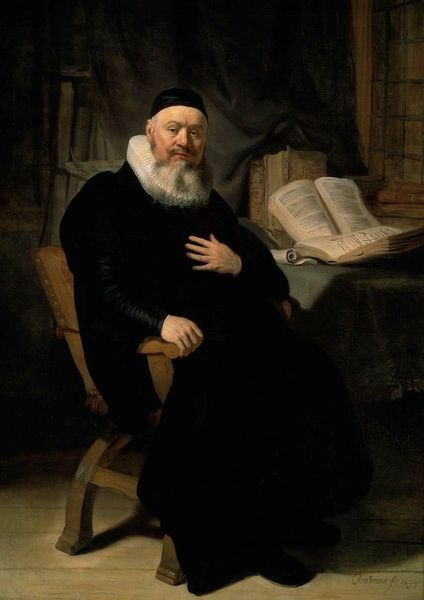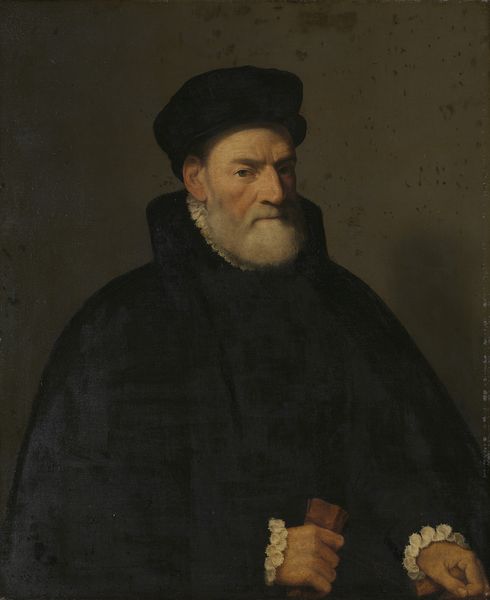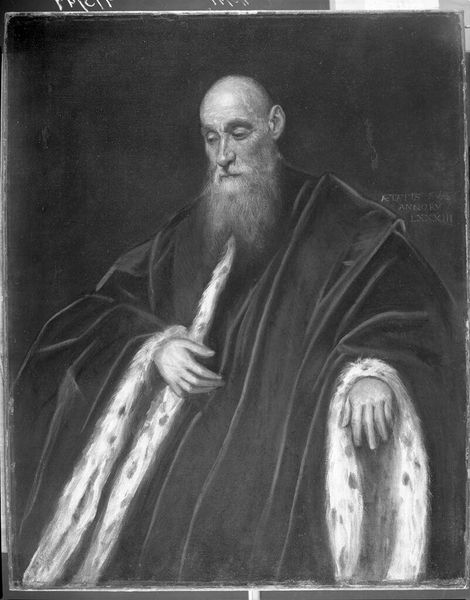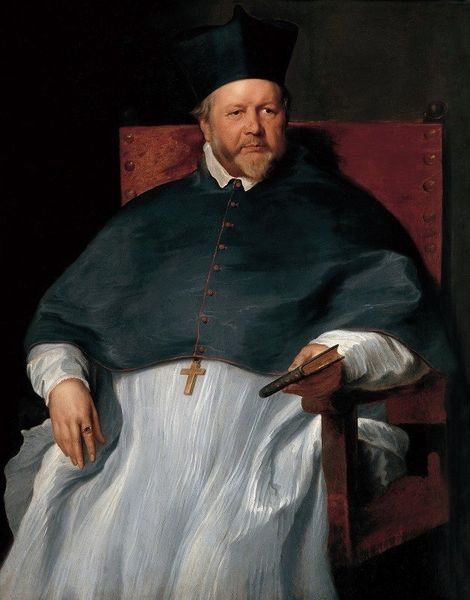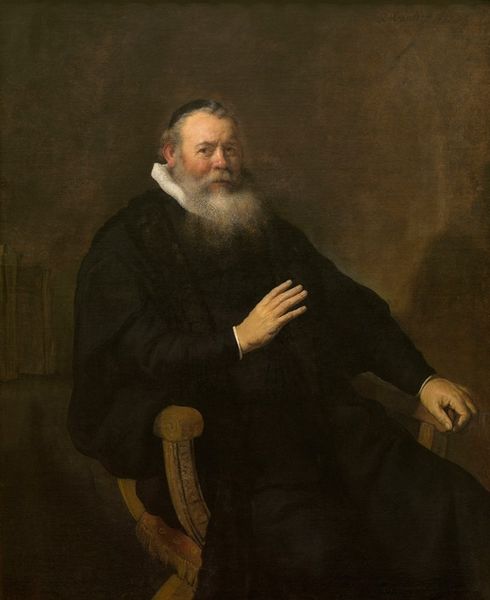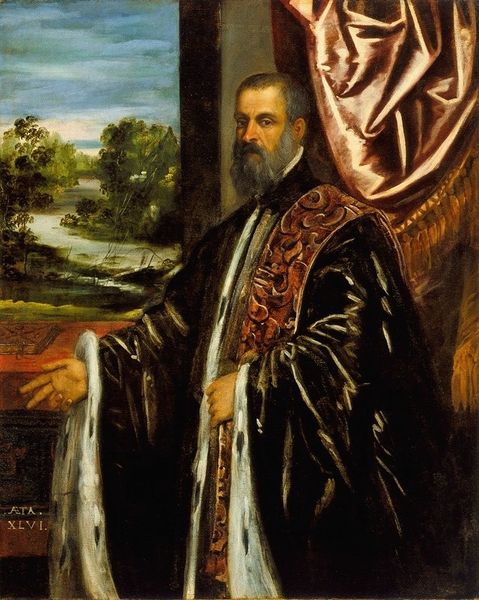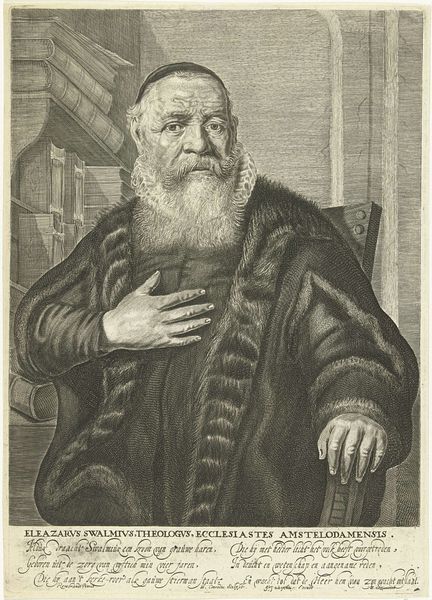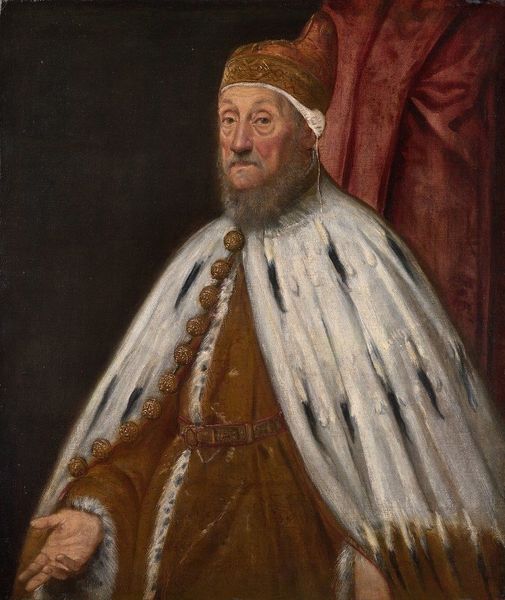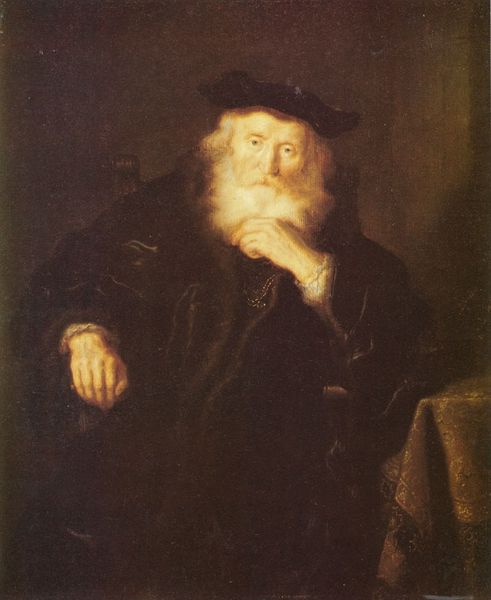
Copyright: Public Domain: Artvee
Curator: Standing before us is Titian's oil portrait of Filippo Archinto, believed to have been completed around the mid-1550s. Editor: The somber palette and the weight of the dark fabrics lend an immediate impression of power and perhaps even melancholy. Curator: Precisely. Titian, a master of the Venetian school, uses color and texture to signify status. Archinto was a prominent Milanese archbishop and jurist, a figure of considerable influence. Notice the dramatic contrast between the stark white of his beard and robes against the dark background, emphasizing his face. Editor: And those rings! Their glint draws the eye, yet they also function as signifiers, subtle yet insistent claims to authority. Is he holding a book? Curator: He is. It likely denotes his scholarly pursuits and legal expertise, reinforcing the image of a man of intellect and faith. But beyond mere representation, observe the brushwork itself – the looseness in the rendering of the white fabric, for example. Editor: The historical context is fascinating. The mid-16th century was a time of religious and political upheaval. Portraits served not only as records but as tools of propaganda. How was this portrait used in Archinto's life? Did it cement alliances or broadcast his principles? Curator: It likely did both. Portraits of this nature affirmed social standing and reinforced existing power structures. The way Titian frames Archinto, slightly elevated and looking down, positions him in a place of control. We can observe a subtle psychological dimension to it as well; a quiet intensity conveyed through the carefully articulated features. Editor: These artworks speak across the ages. As a piece, it raises questions about the role of the church, of powerful men and the complex interplay of visual presentation and historical legacy. Curator: Indeed. Looking closely, it is fascinating how much information is layered within those constructed visual cues that point directly to historical considerations.
Comments
No comments
Be the first to comment and join the conversation on the ultimate creative platform.
